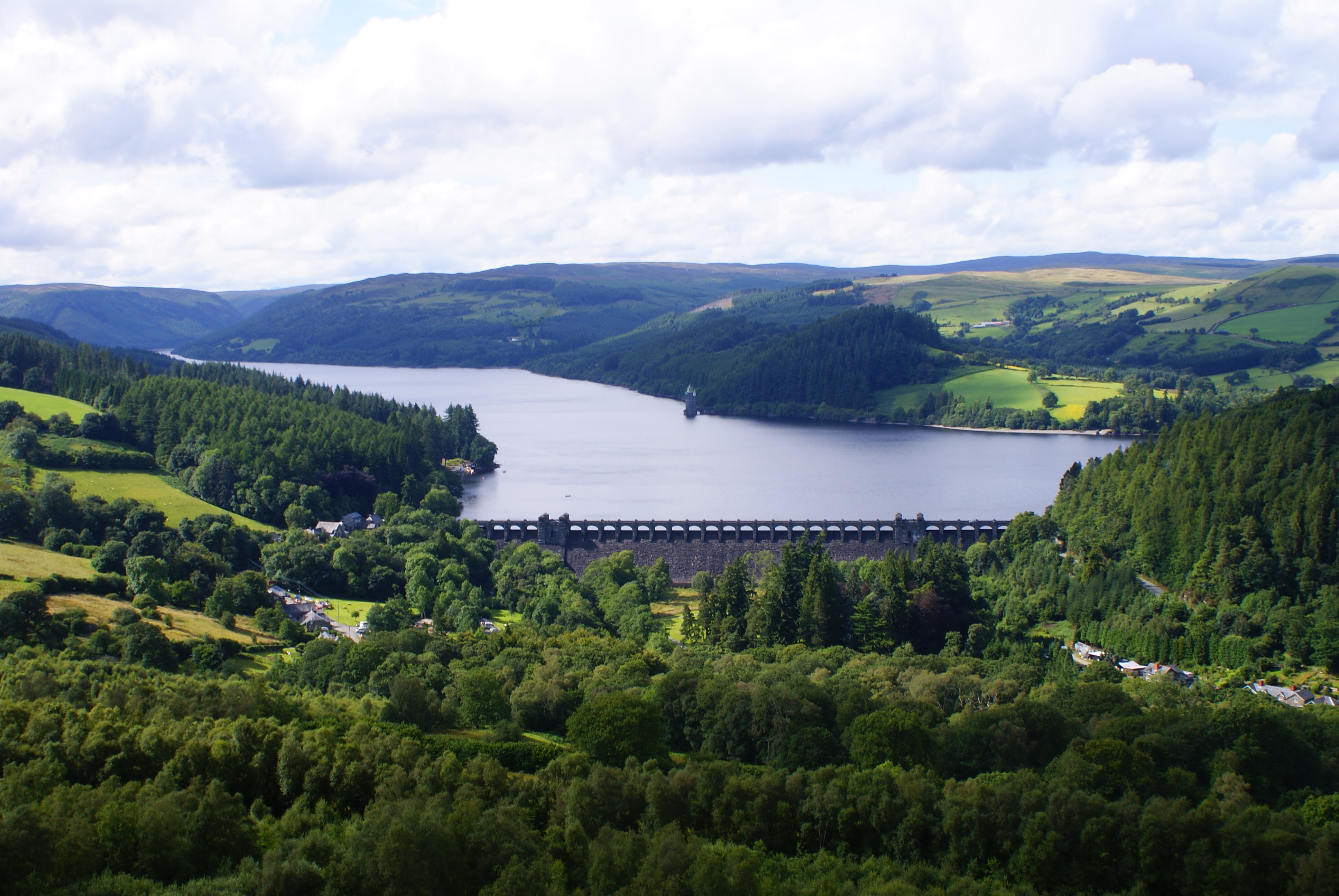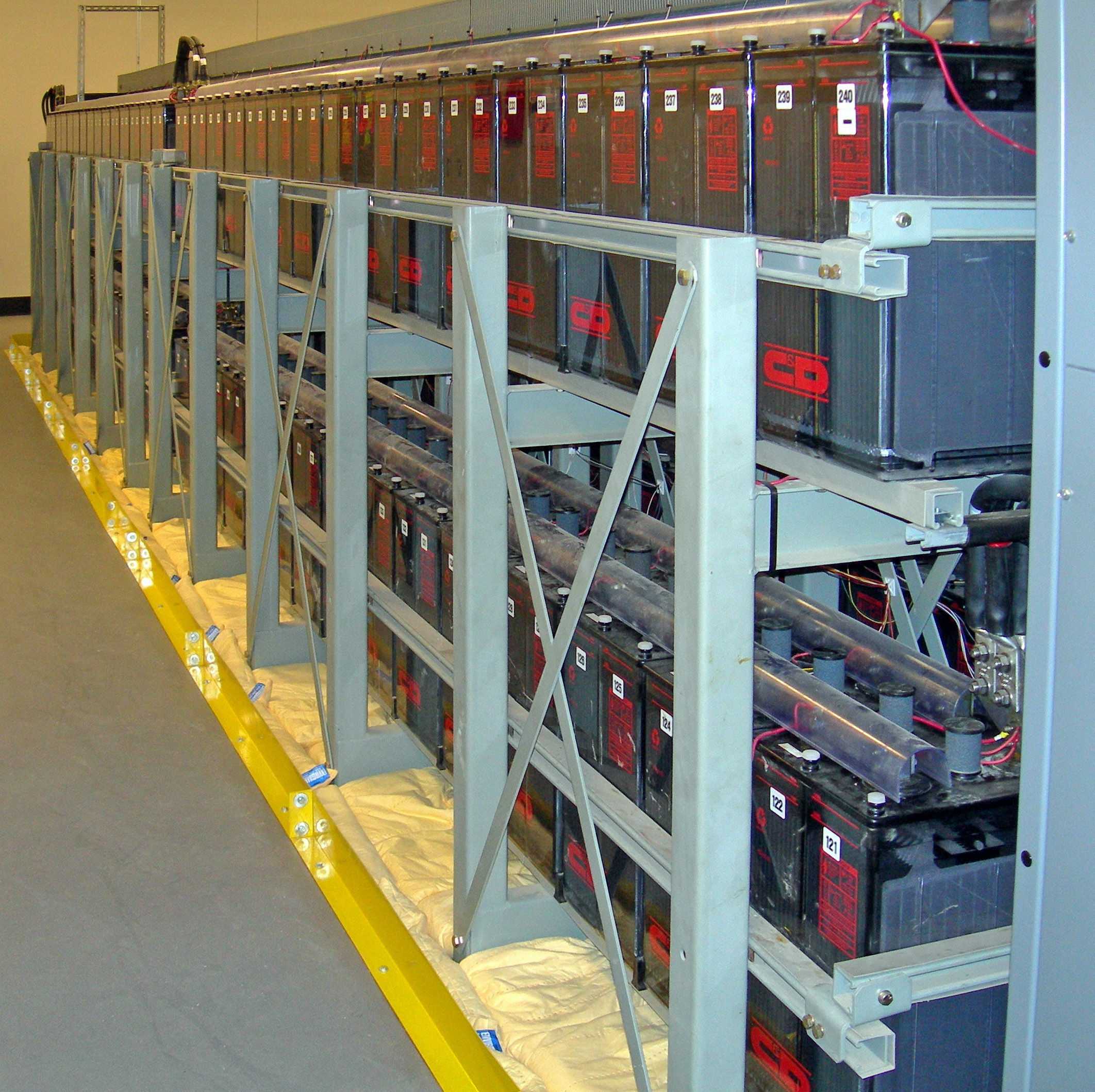|
Seneca Pumped Storage Generating Station
The Seneca Pumped Storage Generating Station is a hydroelectric power plant using pumped storage of water to generate electric power. It is located near Warren, Pennsylvania in Warren County. Seneca Station is colocated with the Kinzua Dam, near Warren, Pennsylvania. The dam was built by the United States Army Corps of Engineers to regulate the Allegheny River as part of a larger flood control project, and, as a secondary role, to generate hydroelectric power. It created the Allegheny Reservoir, a lake that stretches upriver, nearly to Salamanca, New York within the Allegany Reservation of the Seneca Nation of New York. The station generates on average approximately 570,000 megawatt hours of electric energy every year. It has generated hundreds of millions of dollars in profits for its operators since opening in 1970. The power plant, rated at 451 MW, was built by the Pennsylvania Electric Company and Cleveland Electric Illuminating Company. It began commercial operatio ... [...More Info...] [...Related Items...] OR: [Wikipedia] [Google] [Baidu] [Amazon] |
Pumped Storage Hydroelectricity
Pumped-storage hydroelectricity (PSH), or pumped hydroelectric energy storage (PHES), is a type of hydroelectric energy storage used by electric power systems for load balancing. A PSH system stores energy in the form of gravitational potential energy of water, pumped from a lower elevation reservoir to a higher elevation. Low-cost surplus off-peak electric power is typically used to run the pumps. During periods of high electrical demand, the stored water is released through turbines to produce electric power. Pumped-storage hydroelectricity allows energy from intermittent sources (such as solar, wind, and other renewables) or excess electricity from continuous base-load sources (such as coal or nuclear) to be saved for periods of higher demand. The reservoirs used with pumped storage can be quite small, when contrasted with the lakes of conventional hydroelectric plants of similar power capacity, and generating periods are often less than half a day. The round-trip efficie ... [...More Info...] [...Related Items...] OR: [Wikipedia] [Google] [Baidu] [Amazon] |
Salamanca, New York
Salamanca ( Seneca: ''Onë'dagö:h'') is a city in Cattaraugus County, New York, United States, inside the Allegany Indian Reservation, one of two governed by the Seneca Nation of New York. The population was 5,929 at the 2020 census. It was named after José de Salamanca, a Spanish nobleman and cabinet minister of the mid-19th century. Salamanca invested in railroads around the globe, including the Atlantic and Great Western Railroad in New York State, Pennsylvania, and Ohio. Geography According to the United States Census Bureau, the city has an area of , of which is land and , or 3.88%, is water. Salamanca is within the Allegany Indian Reservation of the Seneca Nation of New York (one of the six tribes of the Iroquois Confederacy). The city population of about 5,900 is about 19% Native American; this does not include Seneca people living in the nearby hamlets of Jimerson Town (one of the two capitals of the nation) and Kill Buck. The city lies along the Allegheny Rive ... [...More Info...] [...Related Items...] OR: [Wikipedia] [Google] [Baidu] [Amazon] |
Peak Load
Peak demand on an electrical grid is the highest electrical power demand that has occurred over a specified time period (Gönen 2008). Peak demand is typically characterized as annual, daily or seasonal and has the unit of power. Peak demand, peak load or on-peak are terms used in energy demand management describing a period in which electrical power is expected to be provided for a sustained period at a significantly higher than average supply level. Peak demand fluctuations may occur on daily, monthly, seasonal and yearly cycles. For an electric utility company, the actual point of peak demand is a single half-hour or hourly period which represents the highest point of customer consumption of electricity. At this time there is a combination of office, domestic demand and at some times of the year, the fall of darkness. Some utilities will charge customers based on their individual peak demand. The highest demand during each month or even a single 15 to 30 minute period of high ... [...More Info...] [...Related Items...] OR: [Wikipedia] [Google] [Baidu] [Amazon] |
Reservoir
A reservoir (; ) is an enlarged lake behind a dam, usually built to water storage, store fresh water, often doubling for hydroelectric power generation. Reservoirs are created by controlling a watercourse that drains an existing body of water, interrupting a watercourse to form an Bay, embayment within it, excavating, or building any number of retaining walls or levees to enclose any area to store water. Types Dammed valleys Dammed reservoirs are artificial lakes created and controlled by a dam constructed across a valley and rely on the natural topography to provide most of the basin of the reservoir. These reservoirs can either be ''on-stream reservoirs'', which are located on the original streambed of the downstream river and are filled by stream, creeks, rivers or rainwater that surface runoff, runs off the surrounding forested catchments, or ''off-stream reservoirs'', which receive water diversion, diverted water from a nearby stream or aqueduct (water supply), aq ... [...More Info...] [...Related Items...] OR: [Wikipedia] [Google] [Baidu] [Amazon] |
Storage Battery
A rechargeable battery, storage battery, or secondary cell (formally a type of energy accumulator), is a type of electrical battery which can be charged, discharged into a load, and recharged many times, as opposed to a disposable or primary battery, which is supplied fully charged and discarded after use. It is composed of one or more electrochemical cells. The term "accumulator" is used as it accumulates and stores energy through a reversible electrochemical reaction. Rechargeable batteries are produced in many different shapes and sizes, ranging from button cells to megawatt systems connected to stabilize an electrical distribution network. Several different combinations of electrode materials and electrolytes are used, including lead–acid, zinc–air, nickel–cadmium (NiCd), nickel–metal hydride (NiMH), lithium-ion (Li-ion), lithium iron phosphate (LiFePO4), and lithium-ion polymer (Li-ion polymer). Rechargeable batteries typically initially cost mor ... [...More Info...] [...Related Items...] OR: [Wikipedia] [Google] [Baidu] [Amazon] |
Fossil Fuel Power Plant
A fossil fuel power station is a thermal power station that burns fossil fuel, such as coal, oil, or natural gas, to produce electricity. Fossil fuel power stations have machines that convert the heat energy of combustion into mechanical energy, which then powers an electrical generator. The prime mover may be a steam turbine, a gas turbine or, in small plants, a reciprocating gas engine. All plants use the energy extracted from the expansion of a hot gas, either steam or combustion gases. Although different energy conversion methods exist, all thermal power station conversion methods have their efficiency limited by the Carnot efficiency and therefore produce waste heat. Fossil fuel power stations provide most of the electrical energy used in the world. Some fossil-fired power stations are designed for continuous operation as baseload power plants, while others are used as peaker plants. However, starting from the 2010s, in many countries plants designed for baseload ... [...More Info...] [...Related Items...] OR: [Wikipedia] [Google] [Baidu] [Amazon] |
Nuclear Power Plant
A nuclear power plant (NPP), also known as a nuclear power station (NPS), nuclear generating station (NGS) or atomic power station (APS) is a thermal power station in which the heat source is a nuclear reactor. As is typical of thermal power stations, heat is used to generate steam that drives a steam turbine connected to a electric generator, generator that produces electricity. , the International Atomic Energy Agency reported that there were 410 nuclear power reactors in operation in 32 countries around the world, and 57 nuclear power reactors under construction. Most nuclear power plants use thermal reactors with enriched uranium in a Nuclear fuel cycle#Once-through nuclear fuel cycle, once-through fuel cycle. Fuel is removed when the percentage of neutron poison, neutron absorbing atoms becomes so large that a nuclear chain reaction, chain reaction can no longer be sustained, typically three years. It is then cooled for several years in on-site spent fuel pools be ... [...More Info...] [...Related Items...] OR: [Wikipedia] [Google] [Baidu] [Amazon] |
Base Load
The base load (also baseload) is the minimum level of demand on an electrical grid over a span of time, for example, one week. This demand can be met by unvarying power plants or dispatchable generation, depending on which approach has the best mix of cost, availability and reliability in any particular market. The remainder of demand, varying throughout a day, is met by intermittent sources together with dispatchable generation (such as load following power plants, peaking power plants, which can be turned up or down quickly) or energy storage. Power plants that do not change their power output quickly, such as some large coal or nuclear plants, are generally called baseload power plants.Donald G. Fink, H. Wayne Beatty (ed), ''Standard Handbook for Electrical Engineers'', Eleventh Edition, Mc-Graw Hill, 1978 , pp. 12-16 through 12-18 In the 20th century most or all of base load demand was met with baseload power plants, whereas new capacity based around renewables often employs ... [...More Info...] [...Related Items...] OR: [Wikipedia] [Google] [Baidu] [Amazon] |
FirstEnergy
FirstEnergy Corp. is an electric utility headquartered in Akron, Ohio. It was established when Ohio Edison merged with Centerior Energy in 1997. Its subsidiaries and affiliates are involved in distributing, transmitting, and generating electricity, energy management, and other energy-related services. Its ten electric utility operating companies comprise one of the United States' largest Investor-owned utility, investor-owned utilities, based on serving 6 million customers within a area of Ohio, Pennsylvania, West Virginia, Virginia, Maryland, New Jersey, and New York (state), New York. Its generation subsidiaries control more than 16,000 megawatts of capacity. Its distribution lines span over 194,000 miles. In 2018, FirstEnergy ranked 219 on the Fortune 500, ''Fortune'' 500 list of the largest public corporations in the United States by revenue. In November 2016, FirstEnergy decided to exit the competitive power business and become a fully Regulated market, regulated company. ... [...More Info...] [...Related Items...] OR: [Wikipedia] [Google] [Baidu] [Amazon] |
Business Merger
Business is the practice of making one's living or making money by producing or buying and selling products (such as goods and services). It is also "any activity or enterprise entered into for profit." A business entity is not necessarily separate from the owner and the creditors can hold the owner liable for debts the business has acquired except for limited liability company. The taxation system for businesses is different from that of the corporates. A business structure does not allow for corporate tax rates. The proprietor is personally taxed on all income from the business. A distinction is made in law and public offices between the term business and a company (such as a corporation or cooperative). Colloquially, the terms are used interchangeably. Corporations are distinct from sole proprietors and partnerships. Corporations are separate and unique legal entities from their shareholders; as such they provide limited liability for their owners and members. Corporati ... [...More Info...] [...Related Items...] OR: [Wikipedia] [Google] [Baidu] [Amazon] |
Cleveland Electric Illuminating Company
FirstEnergy Corp. is an electric utility headquartered in Akron, Ohio. It was established when Ohio Edison merged with Centerior Energy in 1997. Its subsidiaries and affiliates are involved in distributing, transmitting, and generating electricity, energy management, and other energy-related services. Its ten electric utility operating companies comprise one of the United States' largest investor-owned utilities, based on serving 6 million customers within a area of Ohio, Pennsylvania, West Virginia, Virginia, Maryland, New Jersey, and New York. Its generation subsidiaries control more than 16,000 megawatts of capacity. Its distribution lines span over 194,000 miles. In 2018, FirstEnergy ranked 219 on the ''Fortune'' 500 list of the largest public corporations in the United States by revenue. In November 2016, FirstEnergy decided to exit the competitive power business and become a fully regulated company. On July 21, 2020, Speaker of the Ohio House of Representatives, Larr ... [...More Info...] [...Related Items...] OR: [Wikipedia] [Google] [Baidu] [Amazon] |








